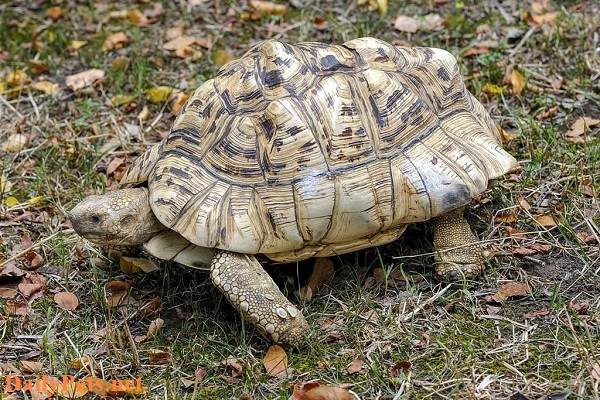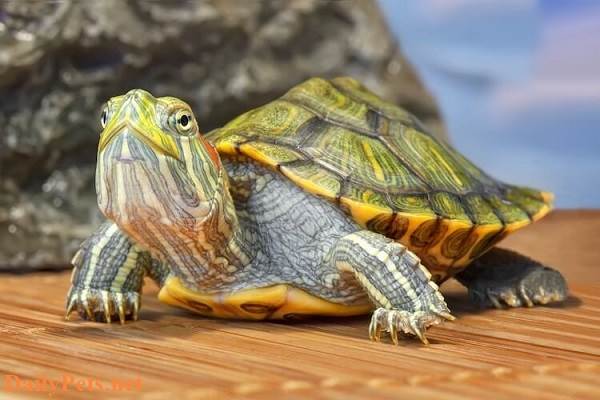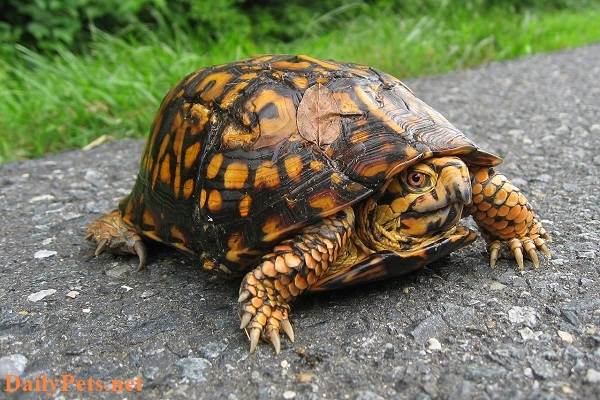They specialize in eating fresh grass and vegetables. Their favorite dish is various types of leaves, plants belonging to the aloe family, and the fruits and leaves of the wax tree…
You are learning about the Leopard Tortoise, also known as the African Leopard Tortoise. Let DailyPets.net share how to care for this species through the following article.
Origin and Characteristics of the Leopard Tortoise
Leopard Tortoise originates from the deserts and grasslands of Southeast Africa. It is a herbivorous land turtle and the second-largest turtle species in Africa.

Leopard Tortoise.
The average size when fully grown is about 45cm long and weighs 18kg. Some well-nurtured turtles can reach up to 70cm in length and weigh 55kg. The African Leopard Tortoise also has a high lifespan, ranging from 50 to 100 years.
Leopard Tortoise has a domed shell with a high arch. In some cases, the shell forms a pyramid. The turtle’s skin often has black and yellow patterns. The hind limbs are cylindrical, and the front limbs are paddle-shaped. They move quickly and can swim for about 10 minutes.
How to Care for the Leopard Tortoise
For the Leopard Tortoise, you need a large and spacious enclosure to create a comfortable environment for the turtle. The suitable temperature ranges from 21 to 32 degrees Celsius. Providing a shallow water dish for the turtle to soak in is advisable.
Additionally, you need to set up UVB/UVA lights to provide light for the African Leopard Tortoise to absorb vitamins and metabolic processes.
Do not keep two male turtles in the same enclosure, as they may fight.
What Does the Leopard Tortoise Eat?
Leopard Tortoise likes to eat vegetables such as green, leafy vegetables. You can feed the African Leopard Tortoise with fresh grass, leaves, spinach, cabbage, lettuce, etc. Apart from fresh grass, they also enjoy various types of leaves, plants belonging to the aloe family, and the fruits and leaves of the wax tree…
Experience from Mini Aquarium is that when feeding turtles vegetables and leaves, do not make them too wet as it may affect their digestion.
Additionally, it is essential to supplement calcium and vitamins for the turtle. Use powdered calcium and vitamins and sprinkle them with the turtle’s food. When the Leopard Tortoise lacks vitamins and nutrients, they may show signs such as loss of appetite, excessive sleep, lethargy, or frequent closing of the eyes… Remember to pay attention to these signs.

